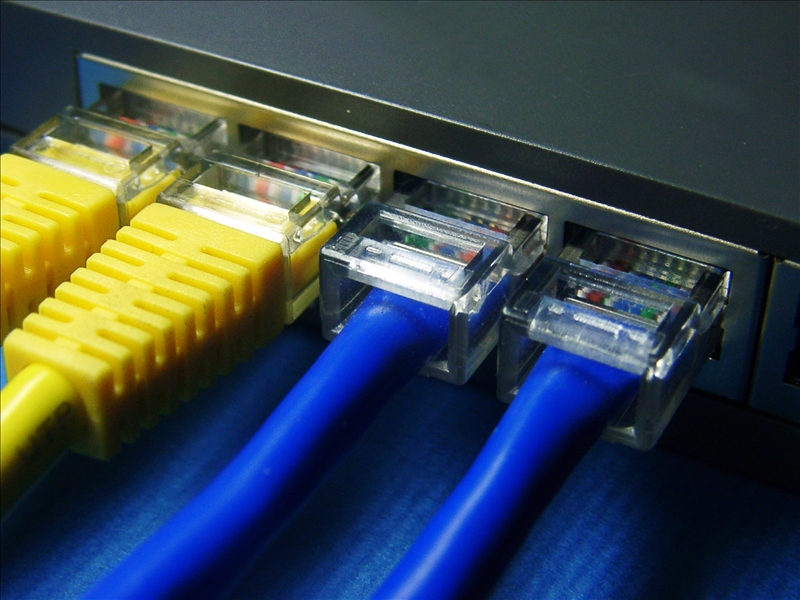
Progressive Office Cabling: Revolutionizing Connectivity for Modern Workspaces
Comprehensive Cabling Solutions
1. Cat5e, Cat6, and Fiber Optic Network Cabling
High-speed data transmission is vital for the efficiency and growth of any business. Our services include the installation of Cat5e and Cat6 cables, which are perfect for most office environments and support speeds up to 1 Gbps and 10 Gbps, respectively. Our fiber optic cabling is the ideal choice for enterprises requiring faster speeds and greater bandwidth, providing unparalleled data transmission capabilities immune to electromagnetic interference.
2. Rack and Cable Management Systems
A well-organized cabling system maintains an efficient and safe work environment. We design and install tailored rack and cable management systems that streamline cable distribution and enhance ease of maintenance and future scalability. Our solutions help avoid cable clutter, which can lead to decreased performance and increased risk of damage.
3. Cable Repair Services
Our expertise doesn't just stop at installation. Progressive Office Cabling offers comprehensive cable repair services to ensure your network maintains optimal functionality. Whether wear and tear, cut cables, or other damages, our technicians can swiftly diagnose and rectify issues, minimizing downtime and maintaining productivity.
4. Plenum and PVC Solutions
Safety in cable installations cannot be overlooked, especially in environments that require strict compliance with building codes. Our Plenum-rated cables are designed to meet the highest standards of fire resistance and low smoke production, which is ideal for spaces used for air circulation for heating and air conditioning systems. Likewise, our PVC cabling solutions are durable, cost-effective, and suitable for indoor applications.
5. Security Camera Systems
Enhance the security of your premises with our state-of-the-art security camera systems. From installation to maintenance, we provide high-quality cameras with the latest technology to monitor and protect your property effectively. Our systems are designed to suit various business sizes and can easily be integrated into your existing network.
6. Door Access Control and Card Readers
Secure your business further with our comprehensive door access control systems. We offer a range of solutions, from card readers to biometric systems, ensuring that access to sensitive areas is controlled and monitored. Our systems are customizable and can be integrated with other security measures to provide a comprehensive security solution.
7. Cable Certification and Compliance
Ensuring your cabling system meets industry standards and compliance requirements is crucial. Progressive Office Cabling provides thorough cable testing and certification services, verifying that your network cabling is up to standard and optimized for future needs. This service ensures your cabling infrastructure meets all regulatory requirements and reliably supports high data transmission rates.
8. Cabling Cleanup
Old cabling can cause many issues, from safety hazards to decreased network efficiency. Our cabling cleanup service helps businesses remove or reorganize outdated cables, enhancing overall network performance and safety while creating a cleaner, more organized workspace.
Why Choose Progressive Office Cabling?
At Progressive Office Cabling, we understand that each business has unique needs. That's why we offer customized solutions to enhance your network infrastructure. Our team of experts is committed to delivering top-notch service and support, ensuring that your business stays connected in today's digital world.
Contact us today for more information on how we can help your business thrive through superior cabling solutions. Revolutionize your workspace with Progressive Office Cabling, where connectivity meets reliability and security.






 Your employees are dissatisfied by their company’s
Your employees are dissatisfied by their company’s 
 As discussed in Part 1,
As discussed in Part 1, 

 enhances air circulation and cable ventilation. This can be appropriate beneath desks, elevated floors, or hanging tray systems. You can assemble basket trays for intersections, horizontal sections, mounting braces, hardware, and tray cutters.
enhances air circulation and cable ventilation. This can be appropriate beneath desks, elevated floors, or hanging tray systems. You can assemble basket trays for intersections, horizontal sections, mounting braces, hardware, and tray cutters.
